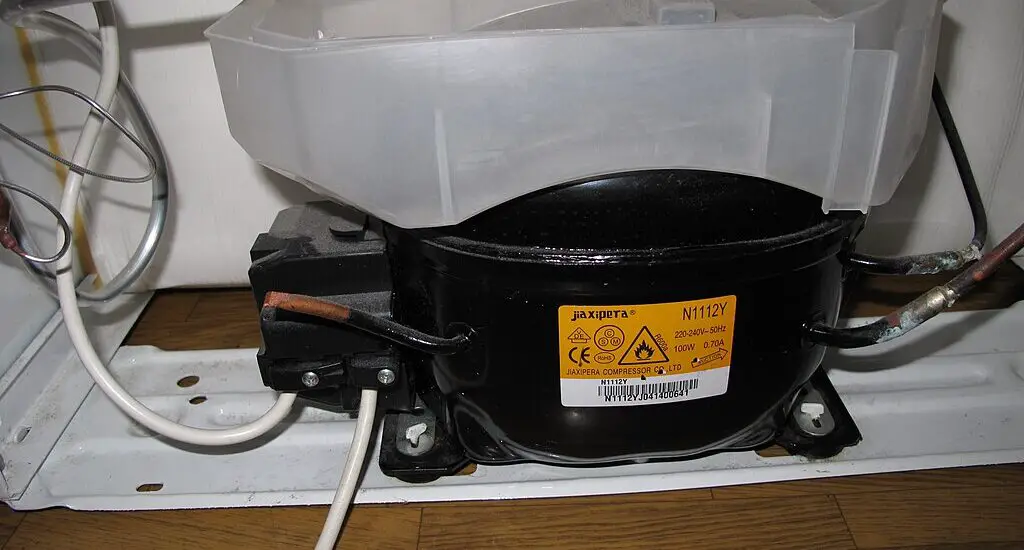If you’ve found that your refrigerator compressor does not shut off, it’s understandable to feel worried. In this detailed guide, you’ll learn the reasons behind this common issue and how to resolve it, step-by-step.

Table of Contents
Common Reasons Refrigerator Compressor Does Not Shut Off
Before we jump into solutions, it’s crucial to understand the possible reasons why a refrigerator compressor would not shut off.
Temperature Settings
If your refrigerator is set to a very low temperature, the compressor might run continuously to try to reach that setting. The compressor kicks in to circulate refrigerant, which cools the interior. If the temperature is set too low, the compressor may struggle to reach it and thus run indefinitely.
Door Seal
The door seal (or gasket) helps keep the cold air inside the fridge. If this seal is damaged, cold air can escape, and warm air can infiltrate, causing the compressor to work harder to maintain the internal temperature. Over time, this could wear down the seal even more, exacerbating the problem.
Defective Thermostat
The thermostat is tasked with sensing the temperature inside the fridge. If it fails, it might incorrectly gauge the fridge’s internal temperature, causing the compressor to run constantly as it attempts to reach the faulty thermostat’s set temperature.
Initial Checks
Before resorting to more technical steps, rule out easily fixable causes.
Check the Temperature Settings: Locate your refrigerator’s control panel, usually found either inside the fridge or at the top or bottom of the exterior. Adjust the temperature setting according to the manufacturer’s recommended guidelines, which can usually be found in the user manual.
Inspect the Door Seal: Examine the rubber seal around the edges of your refrigerator and freezer doors. Feel for drafts or see if it’s loose. You can test its effectiveness by placing a piece of paper between the seal and the door. If the paper falls or slips out easily when the door is closed, the seal may need replacing.
Professional Diagnostic Steps
For a deeper diagnosis, you may need to get technical. Proceed with caution and unplug your refrigerator before attempting any of the following:
Unplug the Refrigerator: Always unplug your refrigerator to minimize the risk of electric shock.
Check the Thermostat: Using a multimeter, you can check the thermostat for electrical continuity. Set your multimeter to the lowest Ohm rating and touch the probes to the thermostat terminals. If there’s no continuity (the multimeter doesn’t register a reading), you’ll likely need a new thermostat.
If you don’t have a multimeter, you can get this Digital LCD Multimeter from Walmart now.
Examine the Compressor: After unplugging the refrigerator, locate the compressor (usually at the back). If it feels hot to the touch, it may be overworked, indicating that it could be the source of the problem.
Check out these other articles…
Do Refrigerator Compressors Get Hot? Comprehensive Answer
Can I Replace a Refrigerator Compressor Myself? Quick Answer
What Makes a Refrigerator Compressor Go Bad? 3 Major Factors
Do Refrigerator Compressors Have Capacitors? Detailed Answer
Do Refrigerator Compressors Run All the Time? Quick Answer
How to Replace a Faulty Component
If you’ve identified that a component is faulty, replacing it becomes necessary. Here are some general guidelines on how to replace typical components. Please consult your appliance’s specific user manual for more detailed instructions.
Replacing the Thermostat: The thermostat is usually secured by a couple of screws and connected by a set of wires. After unplugging the refrigerator, remove the screws, disconnect the wires, and replace it with a new thermostat. Secure it back into position and reconnect the wires.
Replacing the Door Seal: The seal is generally tucked into a groove on the door, making it easier to remove and replace. Pry it out gently with a flathead screwdriver, and press the new one into the groove. Make sure it sits flush against all edges for a good seal.
Replacing the Compressor: Replacing a compressor is a complex task involving refrigerant recovery and soldering. It’s highly recommended that you seek professional help for this procedure to ensure a safe and effective replacement.
When to Seek Professional Help
If you’ve performed all these steps and the compressor still does not shut off, it’s time to consult a professional. Appliances involve complex electrical systems and it’s often safer and more effective to seek expert assistance.